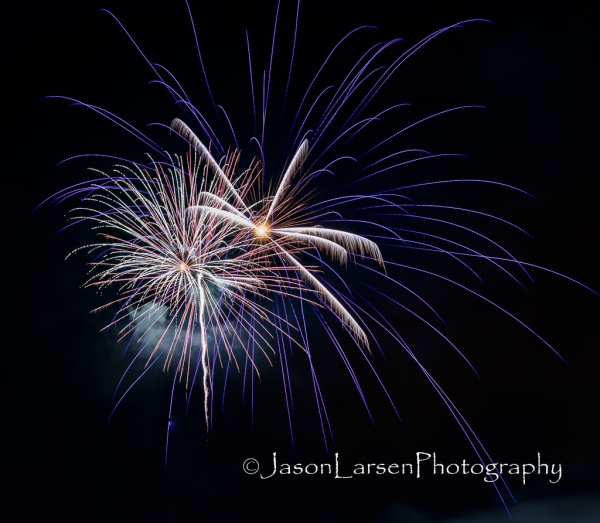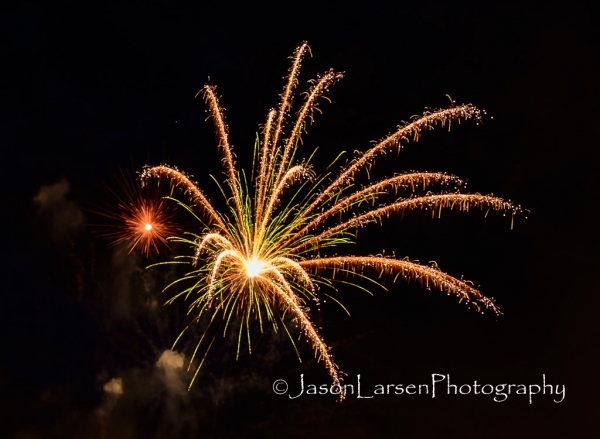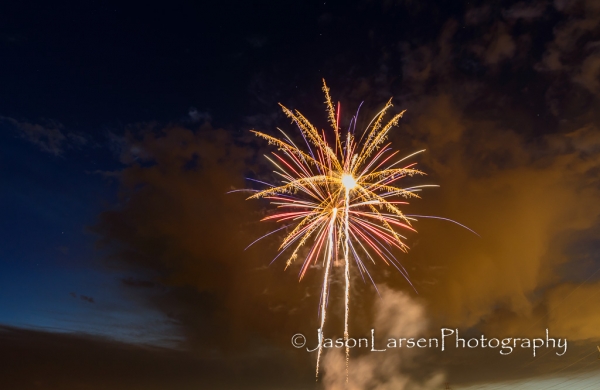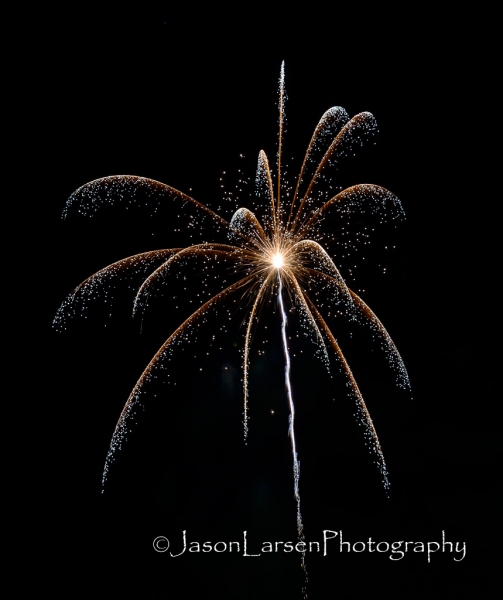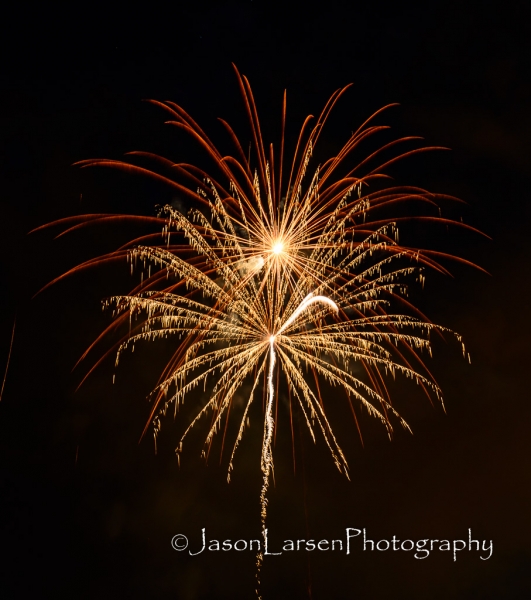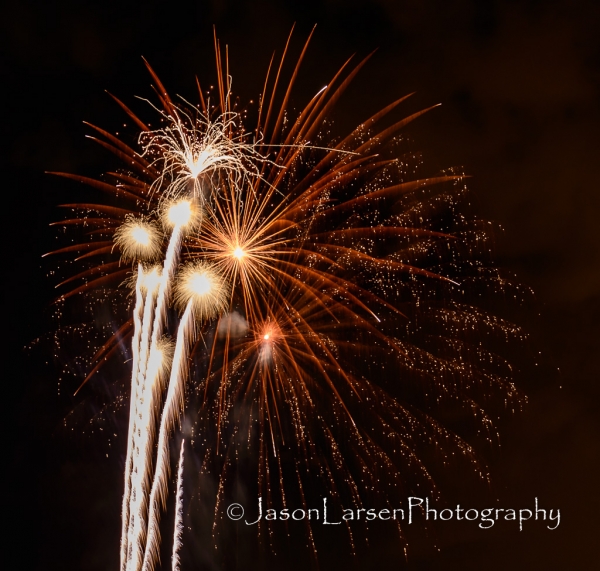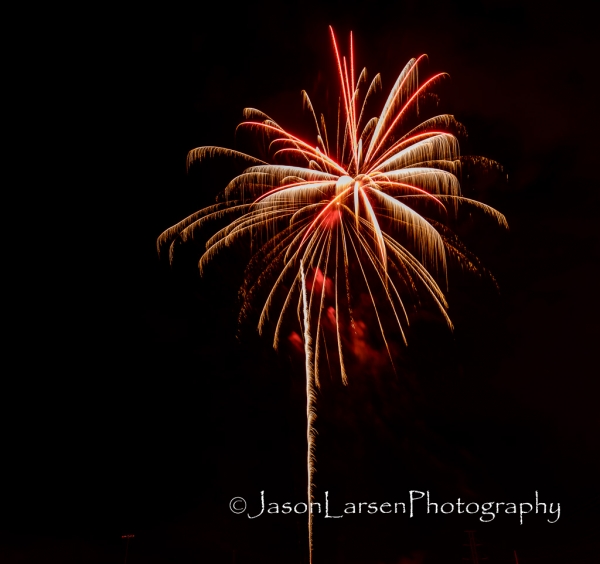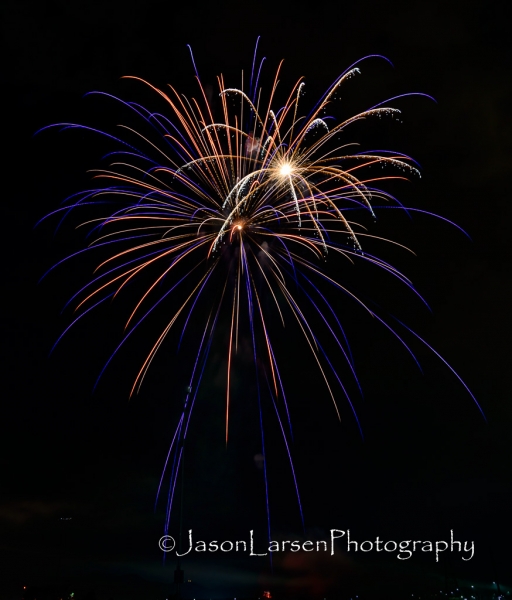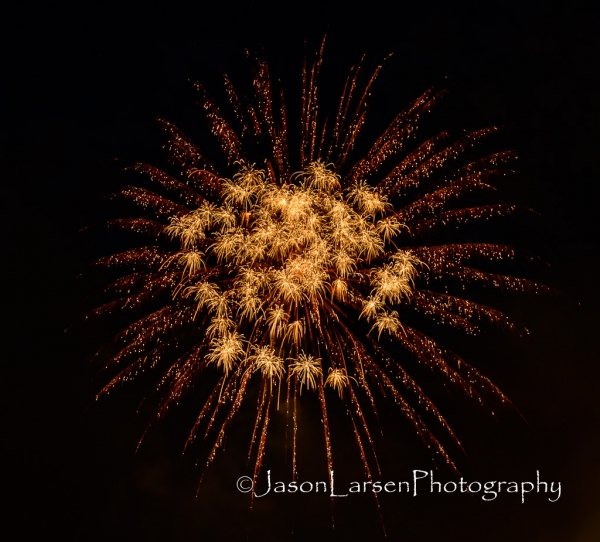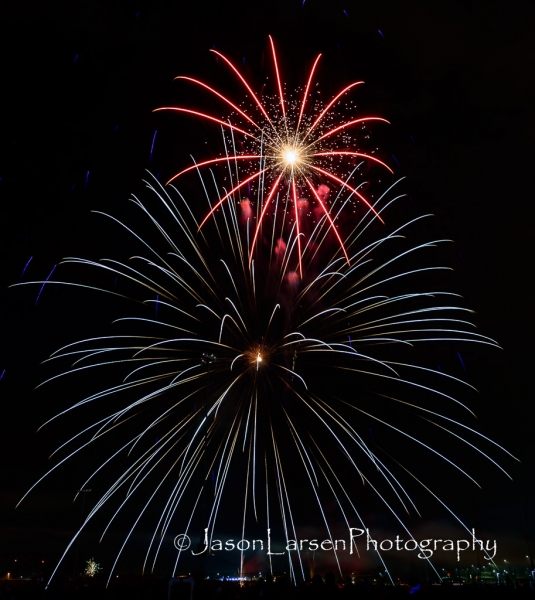As I went through the many, many shots I took of the fireworks, it was very difficult to decide on which ones I liked best!
The firework show was set up on the west side of the park so the spectators in the park were on the east facing the setting sun in the west. Because the sun sets so late in Utah this time of year, when the show started at 10pm, the sky was still lit from the last remnants of the sunset. The orange clouds made an interesting backdrop for the first few fireworks. I also like this one because of the stars you can see in the sky.
I’ve included a few of my favorites in the body of the post, with the rest of the shots in the gallery at the bottom.
Maybe it’s just me, but when I see a great shot I am always curious how the photographer captured the image. So for you photographers out there, I thought I would share the process I went through and the settings I used to capture these images. The camera and lens I used is a Nikon D800 with the Nikon 14-24mm f/2.8 lens. We were fairly close to the fireworks so the wide-angle lens was great to use. It allowed me to be almost right under the fireworks and still capture most of the sky.
Before it became completely dark, I set up my camera up on a tripod and used a light post in the distance to get a tack sharp focus. Once I achieved this sharp focus I turned the camera from auto focus to manual focus so the camera wouldn’t change the focus setting each time I took a photograph throughout the shoot.
Because you are wanting vibrant colors with fireworks a low ISO setting is important. The low ISO setting isn’t a problem in the low light since you are working with long shutter exposures and the fireworks are so much brighter than the night sky. I tried several settings from ISO 100 to 500 and found that ISO 100 gave me the image I liked the best.
I then used an aperture of f/5.6 for two reasons. One, so that the fireworks at different depths in the same frame would be in focus and two, to help limit the ambient light from the background and foreground. This helped create the black backdrop I wanted for the fireworks.
As I took shots of the fireworks, I played around with shutter speeds from 1 to 5 seconds. I found I liked the longer exposure times because it allowed multiple fireworks to appear in each frame. Because of this most of my shots from the night were taken with a shutter speed of 5 seconds.
The long exposure allows for the firework to launch, explode and expand throughout the frame. I would push the shutter down as I heard the launch. This seemed to give the right amount of lead time for the shutter to open before the opening of the firework.
I hope this explanation was helpful to some of you wanting to photograph fireworks in the future.
Here is the gallery of the rest of the keepers from the night.
Happy Independence Day!


